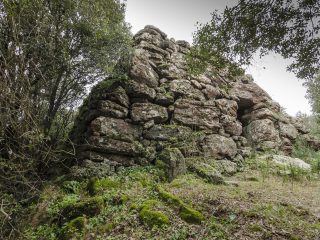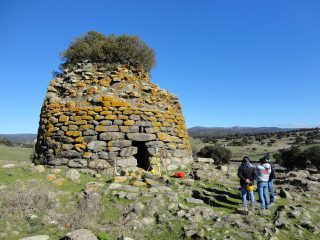The archaeological site stands in an area of around 200 Km2, densely covered in hundred-year-old oak trees and Mediterranean shrub.
The area is home to an exceptional number and variety of prehistoric funeral and sacred findings.
The archaeological digs carried out by Enrico Atzeni in the 1970s/’80s led the site to be attributed to the “Ozieri culture”, widespread in Sardinia in the Late Neolithic period.
The monuments that make up the funeral area are built in local sandstone. The tombs are made up of funeral chambers enclosed in megalithic circles produced with blocks laid in concentric circles. The funeral cells are made of lithic cistas or chambers dug out inside large boulders, or still built with drywall.
The area also includes about 60 menhirs, some linked to the grave structures, others arranged in more or less vast alignments. The menhirs belong to the aniconic and protoanthropomorphic type, with ogival profile and plano-convex section.
Of the funeral monuments, the tomb II shows a captivating mixture of megalithism and hypogeism, a kind of domus de janas above ground.
In a first large mass of sandstone, an access opening to the monument was dug.
The internal space is divided into four rooms with small walls arranged in spokes around a second large boulder of sandstone, placed in the middle of the structure.
The anti-cell and main cell were dug in sequence inside this boulder. They are surrounded by three concentric wall rings, their purpose being to hold the burial mound, no longer there, which covered the entire structure.
The Park offers guided tours even in different languages. There is a picnic area for visitors, an eating area and a small boutique for purchasing souvenirs.
From the town of Goni, take the country road SP23 in the direct of San Basilio. After 2.3 km, you’ll see the entrance to the archaeological site on your left. The route is marked with tourist signs.





















